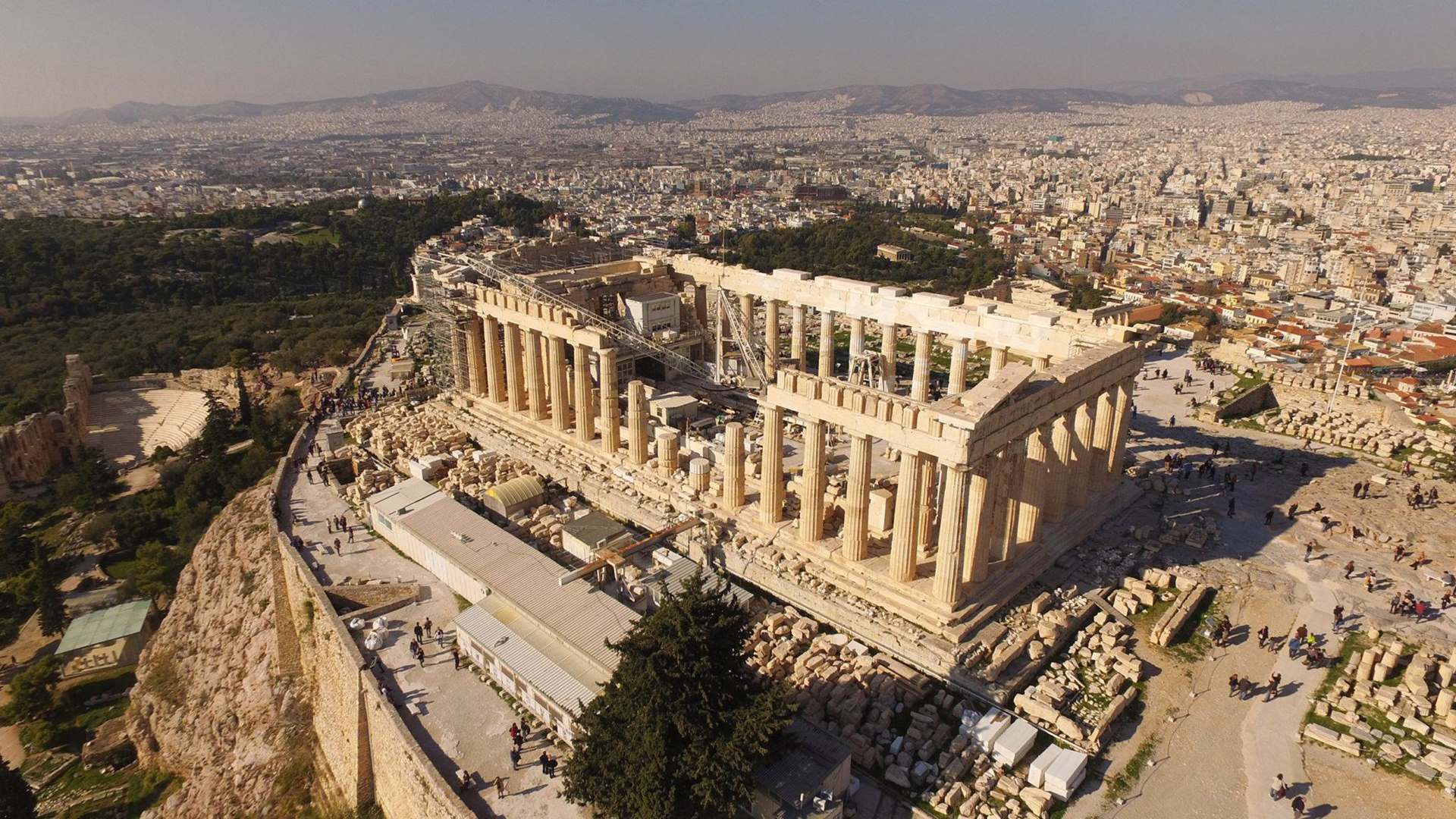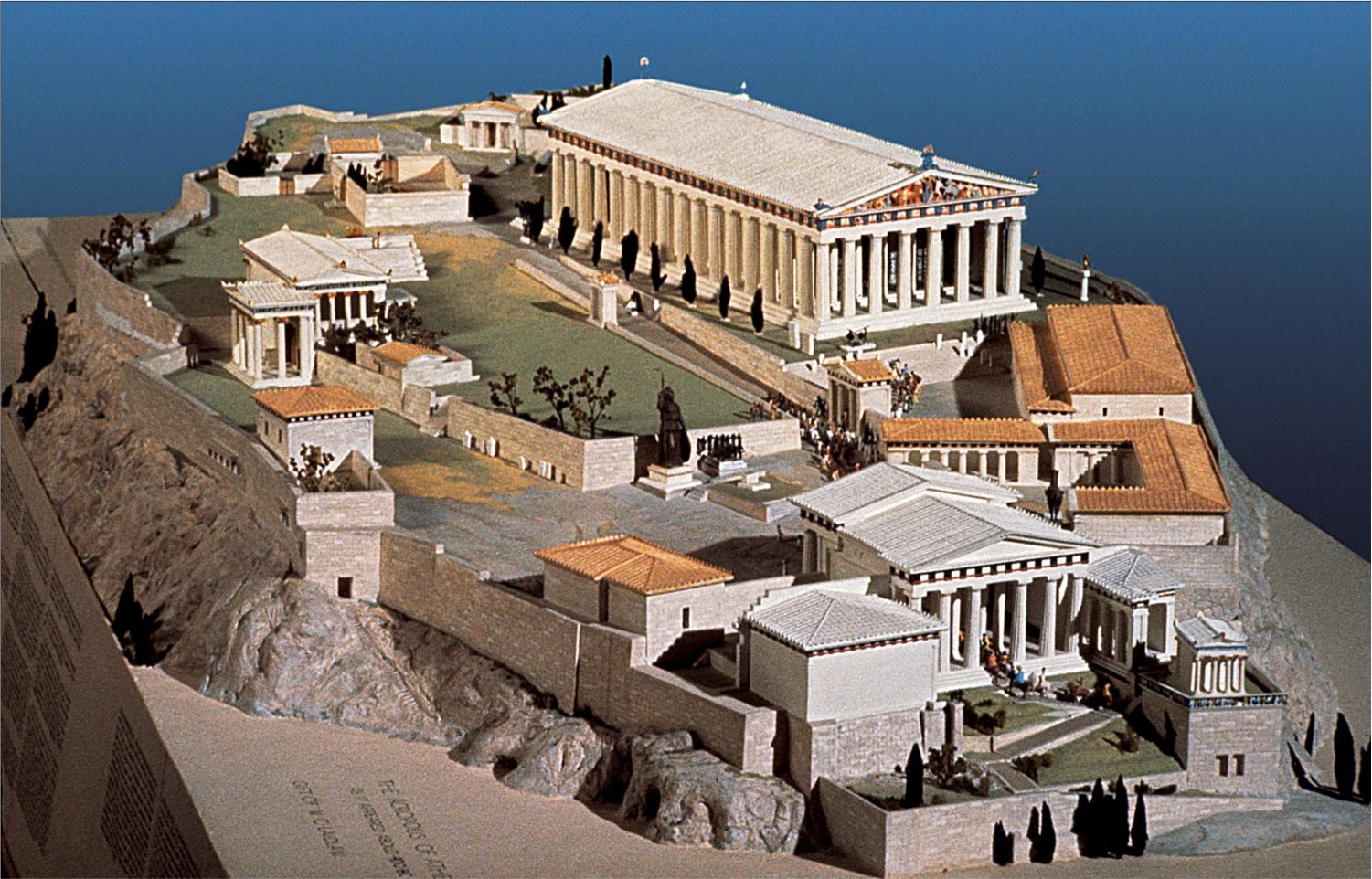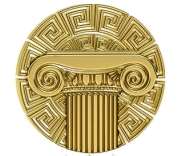(Quelle: Youtube)

帕提农神庙(古希腊文:Παρθενών),是古希腊雅典娜女神的神庙,兴建于公元前5世纪的雅典卫城。它是现存至今最重要的古典希腊时代建筑物,一般被认为是多立克柱式发展的顶端;雕像装饰是古希腊艺术的顶点,此外还被尊为古希腊与雅典民主制度的象征,是举世闻名的文化遗产之一。近两个世纪以来,希腊持续进行对该神庙的修复与重建工作。[3]
现存的帕提农神庙是兴建来取代另一座旧帕提农神庙的(公元前480年为波斯人入侵所毁坏),就像大部分的希腊神庙,帕提农也用做金库的用途,有一阵子是提洛同盟(后来演变成雅典帝国)的金库,公元6世纪,帕提农被改用作纪念处女的天主教教堂(原来供奉的雅典娜也是处女)。在1460年代早期,被奥斯曼土耳其人征服后,它又被用作清真寺。1687年9月28日神庙被土耳其军当火药库,堆积的火药不幸被威尼斯军队炮击中,引发的爆炸严重损毁了庙体还有雕刻。1806年,英国的汤玛斯·布鲁斯,第七代额尔金伯爵在奥斯曼帝国的同意下,把部份保存下来的雕像移走,这些雕像也就是现在一般所知在1816年卖给伦敦大英博物馆的帕提农大理石,现在还展示在那里。希腊政府要求归还大理石的运动多年一直没有成功。
帕提农神庙是古希腊文明的重要史迹之一,对于研究古希腊的历史、建筑、雕塑、宗教等都具有极其重要的价值。
Der Parthenon (griechisch παρθενών „Jungfrauengemach“) ist der Tempel für die Stadtgöttin Pallas Athena Parthenos auf der Athener Akropolis.
Er wurde zum Dank für die Rettung der Athener und Griechen durch die Göttin nach dem letzten Perserkrieg als dorischer Peripteros erbaut. Im Laufe der Geschichte Griechenlands diente das Gebäude unter anderem auch als Schatzkammer des Attischen Seebunds. Der Parthenon ist eines der berühmtesten noch existierenden Baudenkmäler des antiken Griechenlands und eines der bekanntesten Gebäude weltweit. Das Gebäude beherrscht als zentraler Bau seit fast 2.500 Jahren die Athener Akropolis.
Der Parthenon ersetzte einen älteren Tempel der Athena, den sogenannten Vorparthenon, der während der persischen Eroberung Athens im Jahr 480 v. Chr. zerstört worden war. Im 6. Jahrhundert wurde der Tempel in eine Kirche umgewandelt, die der Jungfrau Maria geweiht war. Unter den Osmanen zur Moschee umgestaltet, beherbergte der Parthenon im Krieg gegen Venedig ein Munitionslager. 1687 wurde dieses von einer Kugel getroffen, wodurch es explodierte und den Tempel stark beschädigte. Umfangreiche Teile seiner Baudekoration wurden 1801 von Lord Elgin entfernt und nach London gebracht. Der Streit über die Rückgabe dieser sogenannten Elgin Marbles hält bis heute an.
パルテノン神殿(パルテノンしんでん、希: Παρθενών, ローマ字: Parthenon)は、古代ギリシア時代にアテナイのアクロポリスの上に建設された、アテナイの守護神であるギリシア神話の女神アテーナーを祀る神殿(en)。紀元前447年に建設が始まり、紀元前438年に完工、装飾等は紀元前431年まで行われた。パルテノン神殿はギリシア古代(en)建築を現代に伝える最も重要な、ドーリア式建造物の最高峰と見なされる。装飾彫刻もギリシア美術の傑作である。この神殿は古代ギリシアそして民主政アテナイ(en)の象徴であり、世界的な文化遺産として世界遺産に認定されている。
神殿は完全な新築ではなく、この地には古パルテノン(en)と呼ばれるアテーナーの神殿があったが、紀元前480年のペルシア戦争にて破壊された後に再建され、当時あった多くの神殿と同様にデロス同盟、そして後のアテナイ帝国の国庫として使われた。6世紀にはパルテノン神殿はキリスト教に取り込まれ、生神女マリヤ聖堂となった。オスマン帝国の占領(en)後の1460年代初頭にはモスクへと変えられ、神殿内にはミナレットが設けられた。1687年9月26日、オスマン帝国によって火薬庫として使われていた神殿はヴェネツィア共和国の攻撃によって爆発炎上し、神殿建築や彫刻などはひどい損傷を受けた。1806年、オスマン帝国の了承を得たエルギン伯(en)は、神殿から焼け残った彫刻類を取り外して持ち去った。これらは1816年にロンドンの大英博物館に売却され、現在でもエルギン・マーブルまたはパルテノン・マーブルの名で展示されている。ギリシア政府はこれら彫刻の返却を求めているが、実現には至っていない[1]。ギリシア文化・観光庁(en)は、パルテノン神殿の部分的な破壊の修復や保全など、後世に伝えるための再建計画を実行している。
パルテノン神殿のある丘の下の方は、世界ラリー選手権(WRC)の一戦、アクロポリス・ラリーのスタート地点としても有名である。
The Parthenon (/ˈpɑːrθəˌnɒn, -nən/; Ancient Greek: Παρθενών; Greek: Παρθενώνας, Parthenónas) is a former temple[4][5] on the Athenian Acropolis, Greece, dedicated to the goddess Athena, whom the people of Athens considered their patron. Construction began in 447 BC when the Athenian Empire was at the peak of its power. It was completed in 438 BC, although decoration of the building continued until 432 BC. It is the most important surviving building of Classical Greece, generally considered the zenith of the Doric order. Its decorative sculptures are considered some of the high points of Greek art. The Parthenon is regarded as an enduring symbol of Ancient Greece, Athenian democracy and Western civilization,[6] and one of the world's greatest cultural monuments. To the Athenians who built it, the Parthenon and other Periclean monuments of the Acropolis were seen fundamentally as a celebration of Hellenic victory over the Persian invaders and as a thanksgiving to the gods for that victory.[7] As of 2007 the Greek Ministry of Culture was carrying out a programme of selective restoration and reconstruction to ensure the stability of the partially ruined structure.[8]
The Parthenon itself replaced an older temple of Athena, which historians call the Pre-Parthenon or Older Parthenon, that was destroyed in the Persian invasion of 480 BC. The temple is archaeoastronomically aligned to the Hyades.[9] Like most Greek temples, the Parthenon served a practical purpose as the city treasury.[10][11] For a time, it served as the treasury of the Delian League, which later became the Athenian Empire. In the final decade of the sixth century AD, the Parthenon was converted into a Christian church dedicated to the Virgin Mary.
After the Ottoman conquest, it was turned into a mosque in the early 1460s. On 26 September 1687, an Ottoman ammunition dump inside the building was ignited by Venetian bombardment. The resulting explosion severely damaged the Parthenon and its sculptures. From 1800 to 1803,[12] Thomas Bruce, 7th Earl of Elgin removed some of the surviving sculptures with the alleged permission of the Ottoman Empire.[citation needed] These sculptures, now known as the Elgin Marbles or the Parthenon Marbles, were sold in 1816 to the British Museum in London, where they are now displayed. Since 1983 (on the initiative of Culture Minister Melina Mercouri), the Greek government has been committed to the return of the sculptures to Greece.[13]
Le Parthénon — grec ancien : Ὁ Παρθενών / Parthenṓn (à l'origine génitif pluriel de παρθένος, nom féminin, « jeune fille, vierge »), littéralement « la “salle” ou la “demeure” des vierges1 », — est un ancien temple,2,3 situé sur l'Acropole d'Athènes, dédié à la déesse Athéna, que les Athéniens considéraient comme la patronne de leur cité.
Réalisé entièrement en marbre pentélique, le Parthénon est à la fois un temple et un trésor, au sens antique du terme4. Le naos du Parthénon fut conçu pour abriter la statue chryséléphantine de la déesse Athéna Parthénos, œuvre monumentale de Phidias, à laquelle les Athéniens présentaient leurs offrandes. Si le culte rendu à la déesse avait habituellement lieu dans l'ancien temple d'Athéna de l'Acropole, qui abritait un xoanon représentant Athéna Polias, le Parthénon fut spécialement consacré à la déesse Athéna Parthénos5, protectrice de la cité et déesse de la guerre et de la sagesse. Mais, concrètement, le Parthénon devait aussi protéger le trésor de la cité. Ce dépôt, composé essentiellement de métaux précieux, était conservé dans l'adyton du temple, regroupant en un même lieu, les fonds de la ville d'Athènes et de la ligue de Délos6. Les 1 150 kilos d’or de la statue d'Athéna pouvaient accessoirement être fondus en cas de nécessité.
Symbole architectural de la suprématie athénienne à l'époque classique, le Parthénon est probablement le temple qui a le plus inspiré les architectes néo-classiques. Il a servi de modèle dans de nombreux pays occidentauxN 1. Ainsi, dans le courant du XIXe siècle, de nombreuses nations occidentales s'en inspirèrent pour héberger leurs institutions politiques — parlements, assemblées ou palais de justice — mais aussi leurs institutions culturelles — bibliothèques, universités ou musées — ou encore leurs institutions financières, comme les sièges de banques ou les bourses.
Il Partenone (in greco antico Παρθενών Parthenṓn /partʰe'nɔ:n/, in greco moderno Παρθενώνας Parthenṓnas /parθe'nɔnas/) è un tempio greco, octastilo, periptero[1] di ordine dorico che sorge sull'acropoli di Atene, dedicato alla dea Atena.
È il più famoso reperto dell'antica Grecia[2]; è stato lodato come la migliore realizzazione dell'architettura greca classica e le sue decorazioni sono considerate alcuni dei più grandi elementi dell'arte greca. Il Partenone è un simbolo duraturo dell'antica Grecia e della democrazia ateniese ed è universalmente considerato uno dei più grandi monumenti culturali del mondo.
El Partenón (literalmente «la residencia de las jóvenes»,1 es decir, aquí «la residencia de Atenea Partenos») es uno de los principales templos dóricos que se conservan. Fue construido entre los años 447 a. C. y 432 a. C. en la Acrópolis de Atenas. Sus dimensiones aproximadas son: 69,5 metros de largo, por 30,9 de ancho; las columnas tienen 10,4 metros de altura. Está dedicado a la diosa griega Atenea, a la que los atenienses consideraban su protectora.
Парфено́н (др.-греч. Παρθενών — дева; чистый) — памятник античной архитектуры, древнегреческий храм, расположенный на афинском Акрополе, главный храм в древних Афинах, посвящённый покровительнице этого города и всей Аттики, богине Афине-Девственнице (Ἀθηνᾶ Παρθένος). Построен в 447—438 годах до н. э. архитектором Калликратом по проекту Иктина и украшен в 438—431 годах до н. э. под руководством Фидия при правлении Перикла. В настоящее время находится в полуразрушенном состоянии, ведутся восстановительные работы.







 History
History
 World Heritage
World Heritage
 Civilization
Civilization



